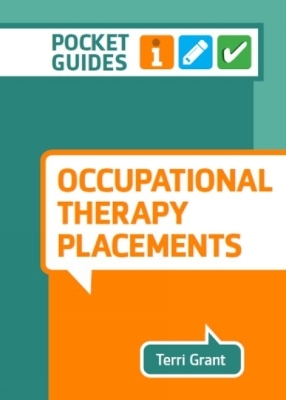
Occupational Therapy Placements
Lantern Publishing Ltd (Verlag)
978-1-908625-91-5 (ISBN)
Placements can be daunting to the unprepared. This pocket guide is designed to make occupational therapy placements more enjoyable and less stressful and to help students get the most out of their practice learning experience.
A handy pocket guide to help occupational therapy students prepare for their practice placements.
Occupational Therapy placements can be daunting – you’ll be working in a range of settings and supporting individuals with a variety of conditions. There are new colleagues to work with, and newly learned theory to put into practice. This pocket guide is designed to make your placements much more enjoyable and less stressful.
From basic equipment to role emerging placements, via positive risk taking, it’s full of practical detail, hints and tips.
Written by a senior lecturer with key input from students – this guidance is really produced with you in mind.
Pocket-sized format – carry it with you at all times.
Space to make your own notes – be it uniform policy, new terminology, or just the names of your new colleagues!
Reduce your stress and make the most of your placements by having this book to hand from the start.
Terri is Senior Lecturer in Occupational Therapy at the University of Worcester. She has been an Occupational Therapist for over 20 years, practising for 14 years as a specialist in the field of Stroke Rehabilitation. In her most recent years in practice, she was involved in setting up services locally to improve the quality of rehabilitation for people following stroke. She has spent the majority of her clinical practice supporting and developing others, from students to colleagues to support staff. She joined the university’s occupational therapy lecturing team full time in 2015, having taught on the programme part time during the previous academic year. Her role as Practice Education Lead allows her to stay connected with clinical practice and to develop her interprofessional expertise. Terri is undertaking a PhD in which she is researching the effectiveness of simulated practice in student practice learning.
Before you go
1. Preparing for placement
2. Uniform
3. Absence
4. Professional codes of practice
4.1 HCPC guidance on conduct and ethics for students
4.2 RCOT code of ethics and professional conduct
4.3 Navigating local policies
5. Client-centred practice
5.1 Least restrictive practice
5.2 Positive risk taking
6. Raising concerns
7. Consent and confidentiality
7.1 Consent
7.2 Confidentiality
8. Guidance on using social media
Settling in
9. Induction and first day
10. Expectations – working with your educator
11. Communicating with patients, carers and family members
12. Communicating with the multidisciplinary team
Being there
13. Reflective practice during placement
13.1 Borton’s model of reflection
13.2 Gibbs’ model of reflection
13.3 Johns’ model of reflection
14. Documentation
15. Working with patients
15.1 Physical health placements
15.2 Mental health placements
15.3 Ward-based placements
15.4 Social Care placements and Community placements
15.5 Specialist placements
15.6 Role emerging placements
15.7 ‘Spoke’ visits
16. Models of practice
16.1 Person – Environment – Occupation (PEO)
16.2 Canadian Model of Occupational Performance and Engagement (CMOP-E)
16.3 Model of Human Occupation (MoHO)
16.4 The Kawa (river) model
17. Frames of reference
18. Basic equipment quick reference guide
18.1 Toilet equipment
18.2 Chair and bed equipment
18.3 Walking aids
19. Using your mandatory training
19.1 Hygiene and infection control
19.2 Moving and handling
19.3 Assessing risk with TILE
19.4 Basic Life Support (BLS)
19.5 ABCDE assessment
19.6 Mental Health First Aid
19.7 Falls
19.8 Sepsis
20. Commonly used medications
20.1 Pain medications
20.2 Antipsychotics
20.3 Antidepressants and anxiolytics
Moving on
21. Reflecting on your overall experience
22. Transferring skills to your next placement
23. Critical reflection and CPD
24. FAQs
| Erscheinungsdatum | 10.05.2021 |
|---|---|
| Verlagsort | Cheltenham |
| Sprache | englisch |
| Maße | 105 x 148 mm |
| Gewicht | 88 g |
| Themenwelt | Medizin / Pharmazie ► Physiotherapie / Ergotherapie ► Ergotherapie |
| ISBN-10 | 1-908625-91-0 / 1908625910 |
| ISBN-13 | 978-1-908625-91-5 / 9781908625915 |
| Zustand | Neuware |
| Informationen gemäß Produktsicherheitsverordnung (GPSR) | |
| Haben Sie eine Frage zum Produkt? |
aus dem Bereich


